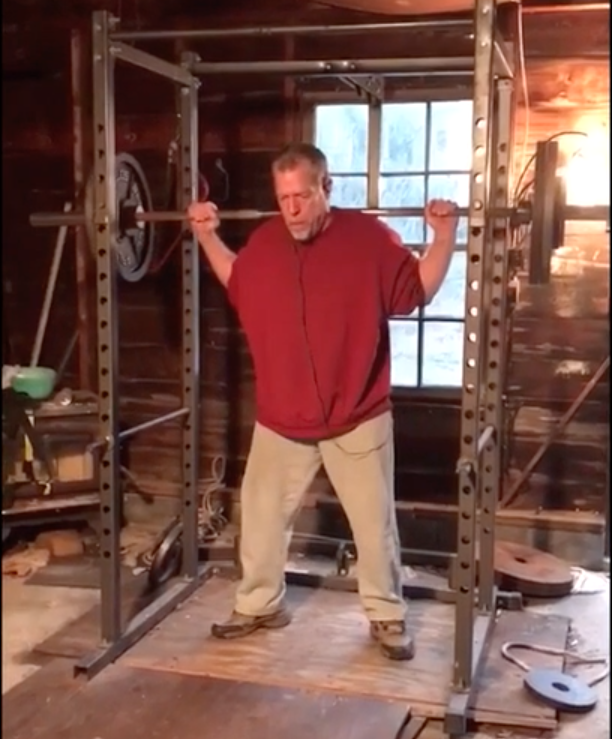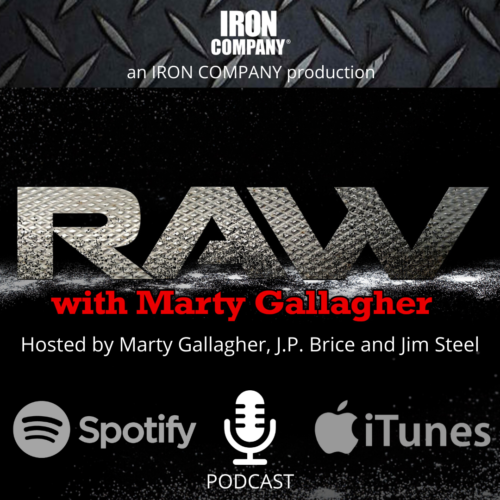
The 100% Training Effort: a fresh thought.
A potential training benchmark? - 100% training effort.
Shoshin (初心) is a word from Zen Buddhism meaning "beginner's mind." It refers to having an attitude of openness, eagerness, and lack of preconceptions when studying a subject, even when studying at an advanced level, just as a beginner would. The term is especially used in the study of Zen Buddhism and Japanese martial arts. The phrase is also discussed in the book Zen Mind, Beginner's Mind by Shunryu Suzuki, a Zen teacher. Suzuki outlines the framework behind Shoshin, noting "in the beginner's mind there are many possibilities, in the expert's mind there are few."
I have been meditating on and about how best to modify, strengthen and improve the human body since 1961. I have been my own ongoing lab experiment starting off as a 110-pound 11-year old boy, already athletic and motivated. I have been studying and applying and improving for decades.
This past week, 58 years into this mission quest, I actually had a fresh thought about my life’s passion. Do you know how difficult it is to think a fresh thought about something you obsess over and have obsessed over for eons?
This past Monday I had a tough, typical, excellent, kick-ass morning training session. I sprinted and then ran steep hills for forty minutes. This was immediately followed by a brutal weight training session. Done training, I ended with a scalding steam bath interspersed with cold showers. After all this, I was in an altered state of mind, exhausted, elated, bathing in the post-workout bliss state.
Admittance to this blissful post-workout mediational state is only attained through intense exercise and sustained physical effort. Knock the shit out of yourself, in a scientific and precise way, this in order to invoke the adaptive response: muscle, strength and power are increased, body fat mobilized and oxidized. There is no adaptive response without brutalization of the body; there is no post-workout bliss state without sending the soft machine into Defcon 5.
On the Jeep ride home, in my blissed-out thoughtless state of being, I had my Shoshin moment when it occurred to me that I “maxed out” a lot.
I always have. I max out in weightlifting every single session and I max out in my cardio every time. Sometimes my capacities are diminished, sometimes my capacities are enhanced, mostly they are normal; regardless, I push the accelerator pedal to the floor in virtually every exercise and drill. I give all I have to give at that instant in time.
I had never thought of considering how many times I exerted 100% in a session. I hesitate to think about how many times in my life I had exerted 100%? Thousands of times for sure. I wondered if all this maxing out was a good thing or a bad thing? I’d never heard anyone broach the subject.
How do we define maxing out? In aerobic exercise maxing out is going as fast as possible for as long as possible before oxygen debt and/or muscle fatigue shuts down the effort – that is 100% effort. You go so hard the body can’t cope and this forces you to pull up. Either your legs or lungs can’t keep up and the body shuts down. This could happen at the end of a 40-yard dash or at the end of a long run.
In resistance training, maxing out is characterized by being unable to compete another rep. Push or pull to the point that another repetition with a barbell or dumbbell is impossible. – that is a 100% effort. The trainee does not need to fail with a rep. We all know when another rep is impossible. Take yourself to that point, regardless the poundage or number of reps, and you have done your duty, you have given 100% of your momentary capacity on that day and time – what more can we do?
This past Monday training session was a typical training day, nothing special. After the session and my Shoshin realization, I decided to tally how many times I had gone all-out, given 100% during my 40-minute cardio session and my 27-minute lifting session.
- Cardio session: after a warm-up, 8 all out sprints interspersed with recovery periods (jogging back to the starting line) then a cross country run with 4 additional 100% sprints, plus a 15-minute super steep hill climb done at the end of the 40-minute session.
Total: 13 100% efforts; Elapsed time: 39:53
- Progressive resistance training: overhead barbell press off the rack, behind-the-neck barbell press, narrow-grip lat pulldown to the front, wide grip lat pulldown to the rear, steep incline bicep curls, dips. 100% effort on every top set and twice on curls and dips.
Total: 8 100% efforts; Elapsed time: 27:03
- Grand total: 21 all out efforts (13 sprints, 8 progressive resistance top sets)
My Monday session was nothing special or out of the ordinary. I did not go into the sessions, thinking, ‘let’s see how many 100% all-out efforts I can generate.’ It was just a post-workout observation of a typical (as of late) session. Never in my life have I noted or even noticed how many all-out efforts I generated during an exercise session. Does it matter? Is this desirable, i.e., is it better to do more all-out efforts as opposed to doing less? Or none? Most folks do none.
Is this continual stressing of the machinery beneficial or detrimental? If it is proven beneficial, i.e. the more all-out efforts the better, then perhaps the number of all out efforts generated during a session might be a new benchmark to use in the pursuit of radical physical transformation.
Nietzsche’s most famous axiom, “that which does not kill me makes me stronger” would predicate that the more 100% efforts the better. There is undoubtably a tipping point where every athlete overdoes, goes too hard too often and either performance nosedives to an unacceptable degree or a fatigue-induced injury occurs. Going all-out when exhausted invites technique breakdown which precedes (often catastrophic) injury.
It occurs to me that elite athletes generate a lot of 100% efforts in their training. It occurs to me that very few fitness trainees, the type you see at commercial facilities using machines for cardio and machines for resistance training, generate any 100% efforts. Further, to step back and get a bit philosophical, very few modern humans have any 100% all out efforts in their entire lives.
The human body was built to withstand stresses and strains. A body that is never stressed degrades over time. Muscles that never strain atrophy. Conversely, why would the human body grow muscle unless stressed up to and then past capacity. Muscle growth is a defensive reaction to repeated stresses it cannot handle. If the stress is within the current capacities of the body, there is no need, no physiological incentive to magically grow muscle or magically melt off body fat.
A word on safety. You can push or pull to 100% (and past) in complete safety. In the word’s of that great Zen philosopher, Inspector Harry Callahan, “A man has got to know his limitations.” If you go to the 100% often, you get really good at sensing the outer limits of your capacities. If you never go 100%, or rarely go there, you are far more likely to hurt yourself trying to find a limit you are unfamiliar with then a man that goes there often.
You can push or pull all-out and stay safe. You can run all-out and not fly apart. Perfect lifting technique keeps us safe. Push or pull without breaking form: no partial reps, no rebounded reps, no sloppy reps, no twisting or contorting in order to complete a rep. Push or pull until you cannot push or pull another rep, you are done. The ideal rep is the barely completed final rep of a top set.
When performing cardio, regardless the mode, tool or drill, experiment with “burst” cardio protocols: sprint, recover, sprint again, repeat for the desired number of sprint reps. if you are running, rowing, swimming, using a cardio device or machine, try going all out by kicking at the end.
Avoid jackrabbit starts when using sprint methodology, this is where the majority of serious hamstring pulls occur. Ease into all-out sprints, save the 100% + stuff for the last 25% to 30% of every sprint distance. It doesn’t matter how fast your going at the beginning of a sprint – only at the end.
When I hit 100% in a sprint, I am ready to abort in a millisecond. Any hint of strain or pull and I pull up in an instant. I live to fight another day. On the other hand, my goal is, and has been, to run all out and then extend the length of time I can maintain 100%. When I am running as fast as possible, I think – what is failing first, lungs or legs?? At some point, going all out I tie up, at that instant I note, ‘what gave first? Lungs or legs?? Optimally both shut down simultaneously. By the way, a great fitness test is how fast you recover after going all out. 12-seconds or less is he goal.
Are you experiencing any 100% efforts in your own training? If not, maybe you are missing the freaking boat. Everyone is concerned about “safety” and “moderation” and eating and exercising “sensibly.” It has been my experience that radical transformation does not occur in response to being sensible or moderate. Just saying.
About the Author
As an athlete Marty Gallagher is a national and world champion in Olympic lifting and powerlifting. He was a world champion team coach in 1991 and coached Black's Gym to five national team titles. He's also coached some of the strongest men on the planet including Kirk Karwoski when he completed his world record 1,003 lb. squat. Today he teaches the US Secret Service and Tier 1 Spec Ops on how to maximize their strength in minimal time. As a writer since 1978 he’s written for Powerlifting USA, Milo, Flex Magazine, Muscle & Fitness, Prime Fitness, Washington Post, Dragon Door and now IRON COMPANY. He’s also the author of numerous books including Purposeful Primitive, Strong Medicine, Ed Coan’s book “Coan, The Man, the Myth, the Method" and numerous others. Read the Marty Gallagher biography here.


